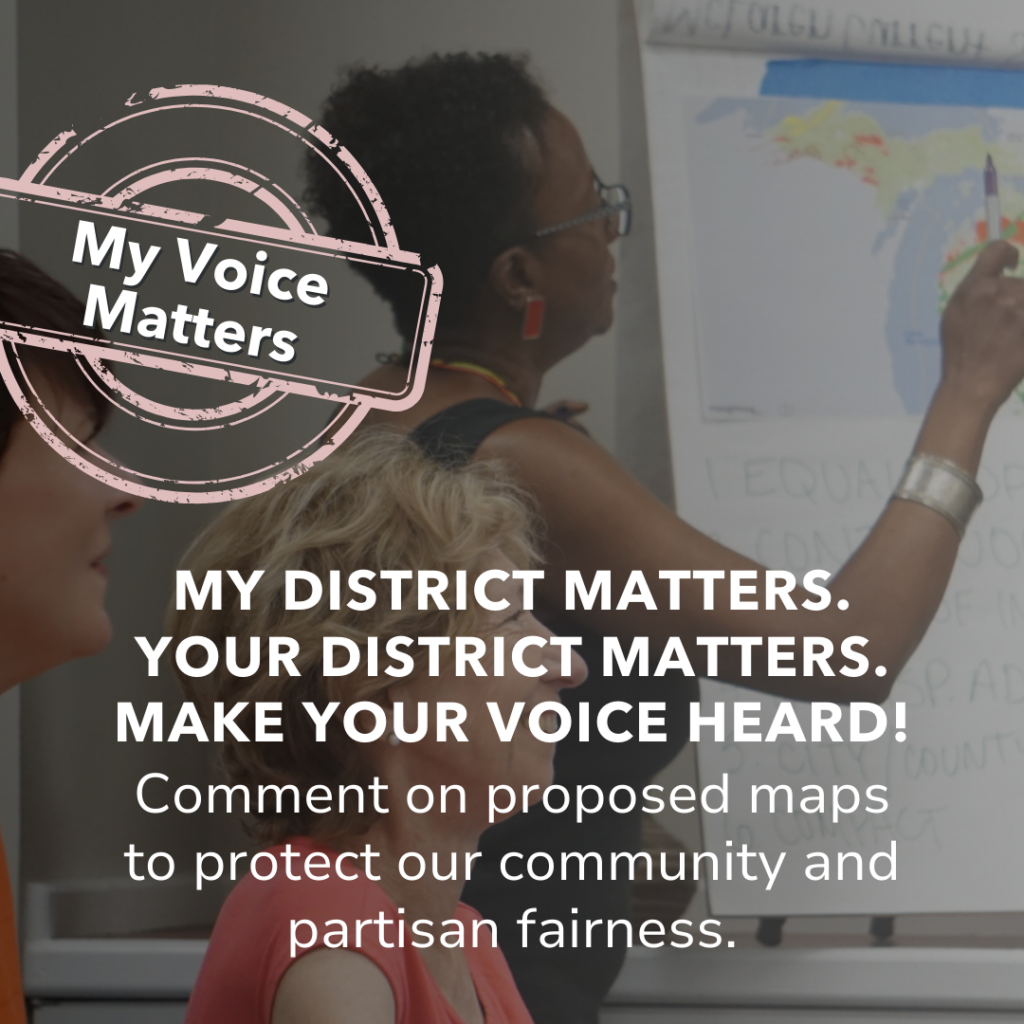After a federal court last December ruled several state house and state senate districts invalid under the Equal Protection Clause of the US Constitution, the Michigan Independent Citizens Redistricting Commission (MICRC) has spent the last 2 months redrawing state House Districts 1, 7, 8, 10, 11, 12 and 14.
Even with challenges like this, Michigan’s independent and transparent redistricting system is still worlds better than what we used to have, and what most states have: maps drawn in secret, by and for politicians. And through this redraw, we have the opportunity to strengthen the process going forward.
This redraw process has included the commission drafting multiple sets of draft maps, receiving hundreds of public comments both online and during meetings, and hosting two in-public hearings in Detroit to solicit public feedback on the draft maps.

Voters Not Politicians also did extensive outreach to make sure Detroiters were made aware of the redraw and were able to make their voices heard during this process. We reached over 840,000 Metro Detroit residents through our digital ad campaign, hosted 4 public comment coaching sessions, and created a grassroots digital toolkit voters could use to engage with the redraw process.
Last week the MICRC successfully voted to send a revised set of state house maps to the court. Motown Sound, the map that was overwhelmingly supported during public comment, was adjusted slightly to make sure district boundaries respected Detroit neighborhoods as much as possible. In the second round of voting, the final version, Motown Sound FC E1 map, was passed across partisan lines as required by the Michigan constitution, with support from 2 of 4 Republicans, all 4 Democrats (including both commissioners from Detroit) and 4 of 5 unaffiliated commissioners.
While the commission could have done better to improve partisan fairness, Voters Not Politicians agrees with the majority of commissioners that of the available options, the Motown Sound FC E1 map did the best job responding to public comment, addressing the issues identified by the court, and following constitutional criteria.
Now, the Court should accept the maps submitted by the voter-approved MICRC, and not undermine the will of Michigan voters by allowing one person, a special master with unknown political motivations and no interaction with the people of Michigan, to draw our legislative district lines.
Here’s what happens next, according to the timeline outlined by the court:
- March 8 is the deadline for the plaintiffs to submit objections to the MICRC mapping plan to the court.
- March 15 is the deadline for the MICRC to respond to the plaintiff’s objections and for the Reviewing Special Master to submit a report to the court on whether the MICRC’s plan satisfies constitutional requirements.
- By March 29, the court will approve a remedial mapping plan for the Michigan House.
- By April 12, the parties are required to agree on a timeline for the redraw of the six Michigan Senate districts voided by the court.
The Mapping Special Master assigned by the court has already submitted an alternate mapping plan to the court, but that plan will not be made public unless the court rejects the commission’s submitted maps. In 2018, Michigan voters, including over 80% of Detroit voters, made clear that they want maps drawn in an independent, and transparent process. Allowing our maps to be drawn by one person, in secret, with no public input would be a disservice to Detroiters and several steps backwards for our democracy.
To stay up to date with the latest redistricting news and learn how you can support Michigan’s fair and transparent redistricting process in this next phase, sign up for Voters Not Politicians’ Weekly Update email here. You can also find more details on the redraw process so far in past editions of the weekly update.
